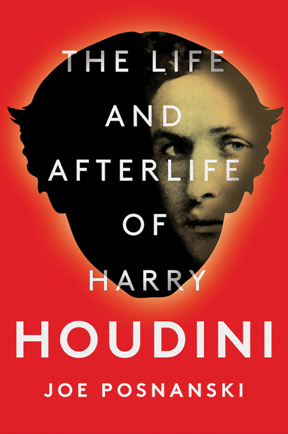
Jewish “The Life and Afterlife of Harry Houdini” by Joe Posnanski, Simon and Schuster, $28, also available as e-book.
Nearly a century after his death, the name Harry Houdini remains a household word, synonymous with the act of escaping from a difficult situation. If anything, his fame has grown since the time he amazed the world with his seemingly impossible escapes. He was a genuine media star in an age when print was the only medium. Quite an accomplishment for the immigrant son of a small-town rabbi.
Many books have been written about this master showman. Do we really need one more? The answer is a resounding yes, in view of the fact that “The Life and Afterlife of Harry Houdini” comes from the pen of Joe Posnanski, who is best known as one of America’s finest sportswriters — remembered by many here in the KC area as a former columnist for the Kansas City Star.
What makes this book stand out from all of the others is that rather than writing another chronological account of the subject’s life, the author has chosen to make the book about his own fascination with Houdini and his quest to learn more about both the man and the legends that still surround his life. He describes his conversations with a number of today’s best-known magicians, including Joshua Jay, Jim Steinmeyer and, finally, the one whom he considers the modern equivalent of Houdini, David Copperfield: “On the surface, how can you look at David Copperfield and Harry Houdini and not see mirror images? They are two Jewish boys who fell in love with magic at a young age, changed their names to follow their dreams, and became the most famous magicians of their respective times. They each collected books and magical objects. They each worked tirelessly — obsessively, even. They both became larger than life.”
In writing about Houdini, it is sometimes hard to separate the man from the myth. Houdini was a master of self-promotion, often getting reviews that he wrote himself published in local newspapers. In some ways, Posnanski argues, the myths are as significant as the facts, and as true of the Houdini phenomenon as a more mundane biography would allow. One surprising thing the author learned along the way is that aside from his legendary escapes, Houdini is not regarded within the magic community as a great magician.
On the other hand, Posnanski does dispel some of the myths, including the 1953 film, which was true to the spirit of Houdini but got the facts all wrong — including the depiction of him dying onstage — and the popular story that he escaped from an ice-covered river after diving into it bound in chains (the escape was real, but not the ice). Posnanski adds, “But as usual with Houdini, the truth is beside the point.” He also dismisses the notion, put forth in a made-for-television film, that Houdini successfully communicated from beyond the grave. While many biographers have accepted the belief that he was killed by a punch to the stomach, he argues that while the punch was real, it was most likely not the cause of death. Ultimately, the author summarizes the meaning of Houdini’s life: “He grasped for the stars. He sought immortality. And he would not yield, not ever. This is the part of Houdini that echoes through the years.”
This is a highly readable and entertaining book, and should be of interest not only to fans of Houdini but to fans of Joe Posnanski as well.